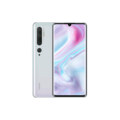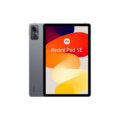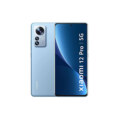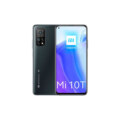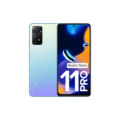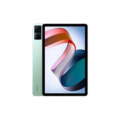Xiaomi Redmi Note 12 Pro




Specs
General
| Device Type | Xiaomi Redmi Phone |
| Announced | 27 October, 2022 |
| Released | 01 November, 2022 |
| Status | Available |
Design
| Dimensions | 164.2 x 76.1 x 8.1 mm |
| Weight | 201 g |
| Protection | Glass front (Gorilla Glass 5), glass back, plastic frame |
| Colors | Star Blue, Graphite Gray, Polar White, Ice blue |
Display
| Refresh Rate | 120 Hz |
| Display Type Display Technology => A number of display technologies and types used in mobile phones => TFT (Thin Film Transistor), IPS (In-Place Switching), OLED (Organic Light Emitting Diode), AMOLED (Active-Matrix Organic Light-Emitting Diode), Super AMOLED (an even advanced version of AMOLED), Resistive Touchscreen (Resistive touchscreens contain two layer of conductive material with a very small gap between them which acts as a resistance), Capacitive Touchsceen (Capacitive touchscreen technology consists of a layer of glass coated with a transparent conductor) | AMOLED |
| Size | 6.67 Inches |
| Resolution | 1080 x 2400 pixels |
| Display Colors Display Colors is refers to the number of different shades of colors that the screen is capable of displaying => 64K colors, 256K colors and 16 million colors, Obviously 16M is highest available range of colors and better than others. | 1 B |
| Pixel Density Pixel Density (PPI) is refers to the concentration of pixels on a particular display, measured in pixels per inch (ppi). Pixel density is calculated by dividing the diagonal pixel resolution of a display by its diagonal size, higher pixel density better display quality. | ~398 ppi |
| Touch Screen | Capacitive Touchscreen, Multitouch |
| Display Protection Display Protection => Gorilla Glass is a special alkali-aluminosilicate glass shield with exceptional damage resistance that helps protect mobile displays from scratches, drops, and bumps of everyday use, It is always better to go for a smartphone with Gorilla Glass for that added protection and peace of mind. | Corning Gorilla Glass 5 |
| Features | Dolby Vision, HDR10+, 500 nits (typ), 900 nits (HBM) |
| Secondary Display | No |
Camera
| Front Camera | 16 MP, f/2.5, (wide) |
| Camera Setup | Triple |
| Main Camera Camera is able to capture photographs and usually videos, The most important characteristics of a camera are the resolution (measured in megapixels), lens focus type (fixed or automatic), higher megapixel cameras are known to capture higher quality photos, but not always a good measurement of the photos quality. |
50 MP, f/1.9, 24mm (wide), 1/1.56", 1.0µm, PDAF, OIS 8 MP, f/2.2, 120˚ (ultrawide), 1/4.0", 1.12µm 2 MP, f/2.4, (macro) |
| Video | 1080p@30/60fps |
| Camera Features | Geo-tagging, Phase detection, touch focus, HDR, Panorama |
| Flash Flash Light => There is commonly two types of flash lights are used in camera mobile phones, LED Flash (LED flash offers lower power consumption with drive circuitry that takes up very little room, LEDs can be strobed faster than any other light source), Xenon Flash (xenon flash produces an extremely intense full-spectrum white light for a very short duration) | Dual-LED dual-tone flash |
Hardware
| Operating System OS => Every computer system run on a base software called Operating System (OS). Operating System controls all basic operations of the computer (such as smartphone, PDAs, tablet computers and other handheld devices). The Operating System allows the user to install and run third party applications (apps), apps are used to add new functionality to the device. | Android 13 |
| Chipset Chipset is a group of integrated circuits designed to perform one or a more dedicated functions, often with real time computing constraints, Popular smartphones are equipped with more advanced embedded chipsets that can do many different tasks depending on their programming. | Mediatek Dimensity 1080 |
| CPU CPU (Central Processing Unit) mostly known as processors, CPU processes instructions in order to carry out certain functions that make your device operate properly. Processors are often described as the brain of computers, smartphones and tablets, Smartphones and tablets rely on processors to carry out their every task, Processors are an incredibly important factor in selecting any type of computing device, including your smartphone. | Octa-core (2x2.6 GHz Cortex-A78 & 6x2.0 GHz Cortex-A55) |
| Architecture | 64 bit |
| Fabrication | 6 nm |
| GPU GPU (Graphics Processing Unit) is a single-chip processor designed to rapidly manipulate and alter memory to accelerate the creation of images in a frame buffer intended for output to a display, This includes things such as lighting effects, object transformations, and 3D motion. | Mali-G68 MC4 |
| RAM (Memory) RAM (Random Access Memory) is a type of computer memory that can be accessed randomly, any byte of memory can be accessed without touching the preceding bytes that allows information to be stored and accessed quickly from random locations. RAM is the most common type of memory found in computer systems, smartphones, tablets and other electronic devices. | 8 GB |
| Internal Storage Internal Storage is a data storage space (flash memory) mostly used in smartphones, tablets and other electronic devices where operating system, apps, music, photos, videos, files and other user data Is stored. | 256 GB |
| Card Slot Memory Card Slot is a special slot for inserting a memory card. Memory cards allow you to expand the phone's built-in memory, A memory card (sometimes called a flash memory card or a storage card) is a small storage medium used to store data such as text, pictures, audio, and video, for use on small, portable or remote computing devices such as mobile phones, mp3 players, digital cameras. | |
| Sensors Sensors are electronic components that detects and responds to some type of input from the physical environment. The specific input could be light, heat, motion, moisture, pressure and location, The output is generally a signal that is converted to use in computing systems, a location sensor, such as a GPS receiver is able to detect current location of your electronic device. | Accelerometer, Compass, Fingerprint (side-mounted), Gyro |
Network
| SIM TYPE SIM (Subscriber Identity Module) is a small card that contains mobile network subscriber's account information. This allows the phone using the card to attach to a mobile network. The SIM card is most commonly associated with GSM and UMTS mobile networks. Moving a SIM card from one phone to another allows a subscriber to switch mobile phones without having to contact their mobile network carrier. SIM cards can also be used by a phone to store limited amounts of data, such as phone numbers and text messages. | Nano SIM |
| SIM Technology | Hybrid Dual SIM, Dual Standby, (Nano-SIM) |
| 2G Network | GSM 850 / 900 / 1800 / 1900 |
| 3G Network | HSDPA 850 / 900 / 1700(AWS) / 1900 / 2100 |
| 4G Network | LTE band 1(2100), 3(1800), 5(850), 7(2600), 8(900), 40(2300), 41(2500) |
Multimedia
| FM Radio | |
| Stereo Speakers | NO |
| Loudspeaker | YES |
| Audio Jack | 3.5mm jack |
| Audio Features | 24-bit/192kHz audio |
Connectivity
| Wi-fi Wi-Fi is a popular wireless networking technology using radio waves to provide high-speed network connections that allows devices to communicate without cords or cables, Wi-Fi is increasingly becoming the preferred mode of internet connectivity all over the world. | Wi-Fi 802.11 a/b/g/n/ac, dual-band |
| Bluetooth Bluetooth is a wireless communications technology for exchanging data between mobile phones, headsets, computers and other network devices over short distances without wires, Bluetooth technology was primarily designed to support simple wireless networking of personal consumer devices. | 5.0, A2DP, LE, aptX HD |
| GPS GPS The Global Positioning System is a satellite-based radio navigation system, GPS permits users to determine their position, velocity and the time 24 hours a day, in all weather, anywhere in the world, In order to locate your position, your device or GPS receiver must have a clear view of the sky. | A-GPS, GLONASS, BDS, GALILEO |
| USB | USB Type-C 2.0, OTG |
| EDGE EDGE (Enhanced Data GSM Environment) is a wireless network technology generally considered the next step in the 2G network offers data transfer rates up to four times faster than ordinary GSM networks, Generally, EDGE is used for the purpose of wireless data transfer, such as sharing pictures and videos or browsing the Internet via a mobile phone connection. | |
| GPRS GPRS (General Packet Radio Service) is a packet oriented mobile data service on the 2G and 3G cellular communication system's global system for mobile communications (GSM), Generally, GPRS is used for the purpose of wireless data transfer, such as sharing pictures and videos or browsing the Internet via a mobile phone connection. | |
| Speed | 3G (HSPA 42.2/5.76 Mbps), 4G LTE-A (CA) |
| Wi-fi Hotspot | |
| NFC NFC (Near field communication) is a set of standards for smartphones and similar devices to establish peer-to-peer radio communications with each other by touching them together or bringing them into proximity, usually no more than a few inches. |
Features
| Messaging | SMS(threaded view), MMS, Email, Push Mail, IM |
| Web Browser Web Browser => a web browser is a software application used to locate, retrieve and display content on the World Wide Web, including Web pages, images, video and other files, The primary function of a web browser is to render HTML, the code used to design or markup webpages. | HTML5 |
| Games | Built-in + Downloadable |
| Torch |
Battery
| Battery Type Battery Type => Cell phones run on various kinds of batteries depending on the manufacturer, phone size or shape and features. There are basically four types of cell phone batteries => Lithium Polymer, Lithium Ion, Nickel Metal Hydride and Nickel Cadmium. | Li-Ion (Lithium Ion) |
| Capacity Battery Capacity is a measure (typically in Amp-hr) of the charge stored by the battery, and is determined by the mass of active material contained in the battery. The battery capacity represents the maximum amount of energy that can be extracted from the battery under certain conditions. | 5000 mAh |
| Placement | Non-removable |
| Wireless Charging Wireless Charging (Inductive Charging) uses an electromagnetic field to transfer energy between two objects. This is usually done with a charging station. Energy is sent through an inductive coupling to an electrical device, which can then use that energy to charge batteries or run the device. | No |
| Extra |
67W wired, PD3.0 50% in 15 min 100% in 46 min (advertised) |
Xiaomi Redmi Note 12 Pro: Detailed Review
The Xiaomi Redmi Note 12 Pro is part of Xiaomi’s popular Redmi Note series, which is known for offering powerful features at affordable prices. Released in 2023, the Redmi Note 12 Pro continues this legacy with a focus on delivering a premium display, a solid camera setup, reliable performance, and excellent battery life. Let’s dive into a detailed review of the device, covering its design, performance, camera, battery life, software experience, and more.
Key Specifications
- Display: 6.67-inch AMOLED, 120Hz refresh rate, FHD+ (2400 x 1080) resolution
- Processor: MediaTek Dimensity 1080
- RAM: 6GB, 8GB, or 12GB LPDDR4X
- Storage: 128GB or 256GB UFS 2.2 (expandable via microSD)
- Rear Cameras:
- 50 MP (wide, f/1.9, OIS)
- 8 MP (ultrawide, f/2.2, 120-degree FOV)
- 2 MP (macro, f/2.4)
- Front Camera: 16 MP (f/2.45)
- Battery: 5000 mAh, 67W fast charging
- Operating System: MIUI 13 based on Android 12
- Other Features: 5G support, In-display fingerprint sensor, Dual stereo speakers, IP53 rating (dust and splash resistance)
Design & Build Quality
Design:
The Redmi Note 12 Pro follows a sleek and modern design language, similar to its predecessors. It features a glass back with a subtle matte finish, which gives it a premium look while minimizing fingerprints. The camera module is neatly arranged, and the overall build feels sturdy. The phone is relatively slim, and the curved edges ensure a comfortable grip.
Build Quality:
With its IP53 rating for dust and splash resistance, the device can withstand light splashes but isn’t fully waterproof. The Corning Gorilla Glass 5 on the front provides decent protection against scratches and accidental drops.
Color Options:
The Redmi Note 12 Pro comes in a variety of colors, including:
- Midnight Black
- Polar White
- Sky Blue
Display
Specifications:
- Size: 6.67-inch AMOLED
- Resolution: FHD+ (2400 x 1080)
- Refresh Rate: 120Hz
- Brightness: 900 nits peak
- Color Support: 1 billion colors, HDR10+
Performance:
The 6.67-inch AMOLED display is one of the standout features of the Redmi Note 12 Pro. It offers vibrant colors, deep blacks, and sharp details, making it great for watching videos, playing games, or browsing. The 120Hz refresh rateensures smooth scrolling and an overall fluid experience, whether you’re navigating the UI or playing high-frame-rate games.
Outdoor visibility is strong, thanks to its 900-nit peak brightness, allowing you to comfortably use the device even under bright sunlight. HDR10+ support further enhances media consumption, providing richer contrast and more dynamic colors in compatible content.
Performance
Processor & RAM:
The MediaTek Dimensity 1080 chipset powers the Redmi Note 12 Pro. It’s a capable mid-range processor that handles everyday tasks with ease, from browsing and social media to multitasking between apps. The 6GB, 8GB, or 12GB LPDDR4X RAM options provide flexibility for different users, with the higher RAM models offering smoother performance for heavy multitasking and gaming.
The Mali-G68 MC4 GPU ensures decent gaming performance, handling games like PUBG Mobile and Asphalt 9smoothly at medium to high settings, although it may not match flagship-level performance for graphically intense games.
Storage:
With UFS 2.2 storage, the phone offers adequate read and write speeds, although it’s not as fast as the more premium UFS 3.1 storage. The Redmi Note 12 Pro comes with 128GB or 256GB of internal storage, which should be sufficient for most users, and there’s also support for microSD expansion.
Camera System
Main Camera: 50 MP (f/1.9, OIS)
The 50 MP main camera with optical image stabilization (OIS) is capable of capturing high-quality images, especially in well-lit conditions. Photos come out sharp and detailed, with good dynamic range and natural color reproduction. OIS helps reduce blur in low-light situations and keeps the images stable even when your hand is shaky.
Ultrawide Camera: 8 MP (f/2.2, 120-degree FOV)
The 8 MP ultrawide lens is decent for capturing expansive landscapes or group shots. It does an adequate job in daylight, but image quality degrades slightly in low-light environments, with noticeable noise and a reduction in detail.
Macro Camera: 2 MP (f/2.4)
The 2 MP macro camera allows for close-up shots of small objects, but its performance is relatively average. The lack of resolution makes it more of a novelty feature, and the focus can be tricky to get right.
Night Mode:
The Night Mode on the Redmi Note 12 Pro significantly improves low-light photography. It enhances brightness and details in dark environments, with the help of computational photography. However, it’s still not on par with flagship devices in terms of low-light performance.
Front Camera: 16 MP (f/2.45)
The 16 MP front camera captures decent selfies with good color reproduction and clarity in proper lighting conditions. It supports AI beautification features and portrait mode, but low-light performance is just average.
Battery Life
Capacity: 5000 mAh
The 5000 mAh battery is more than enough to last a full day on moderate to heavy usage, including social media browsing, video streaming, gaming, and calls. The phone is optimized for battery efficiency, thanks to its AMOLED display and power-efficient processor.
Charging: 67W fast charging
With 67W fast charging, the Redmi Note 12 Pro can charge from 0 to 50% in just about 15 minutes, making it one of the faster-charging phones in its segment. A full charge takes less than 45 minutes, which is a huge convenience for users who are always on the go.
Software & Features
Operating System:
The Redmi Note 12 Pro runs on MIUI 13, based on Android 12. MIUI is known for its extensive customization options, themes, and additional features like Game Turbo mode and Always-on Display. However, MIUI also comes with a bit of bloatware, though most of the pre-installed apps can be uninstalled or disabled.
Security:
The in-display fingerprint sensor is fast and accurate, providing a convenient way to unlock the phone. Face unlock is also available, though it is software-based and less secure than the fingerprint option.
Other Features:
- Dual Stereo Speakers: The stereo speakers offer good audio quality with decent volume, making media consumption more enjoyable.
- 5G Support: The Redmi Note 12 Pro is future-proofed with 5G connectivity, ensuring faster mobile internet speeds.
- IR Blaster: Xiaomi continues to include the IR blaster, allowing the phone to control home appliances like TVs and air conditioners.
- IP53 Rating: The IP53 rating offers some level of dust and splash resistance, but it’s not fully waterproof.
Pros & Cons
Pros:
- Impressive Display: The 120Hz AMOLED display delivers excellent color accuracy, sharpness, and smooth performance.
- Good Main Camera: The 50 MP main camera with OIS captures sharp, detailed photos with vibrant colors.
- All-Day Battery Life: The 5000 mAh battery easily lasts a full day of use, even under heavy usage.
- Fast Charging: The 67W fast charging is very convenient, allowing you to charge the phone quickly.
- 5G Connectivity: Future-proofed with 5G support for faster mobile data speeds.
- Premium Build: The sleek design and IP53 rating give it a premium feel at a mid-range price.
- Affordable Pricing: Great value for money, offering premium features at a lower price compared to flagship phones.
Cons:
- Average Ultrawide and Macro Cameras: The ultrawide and macro lenses are decent but don’t match the quality of the main camera, especially in low light.
- MIUI Bloatware: MIUI comes with some pre-installed apps that can clutter the experience, though they can be uninstalled.
- Limited Waterproofing: The IP53 rating provides basic protection, but the phone is not fully waterproof.
- No Wireless Charging: The phone lacks wireless charging, a feature now common in many mid-range and flagship devices.
- No High-End Processor: The MediaTek Dimensity 1080 chipset is capable, but it’s not as powerful as Qualcomm’s higher-end offerings, limiting extreme gaming performance.
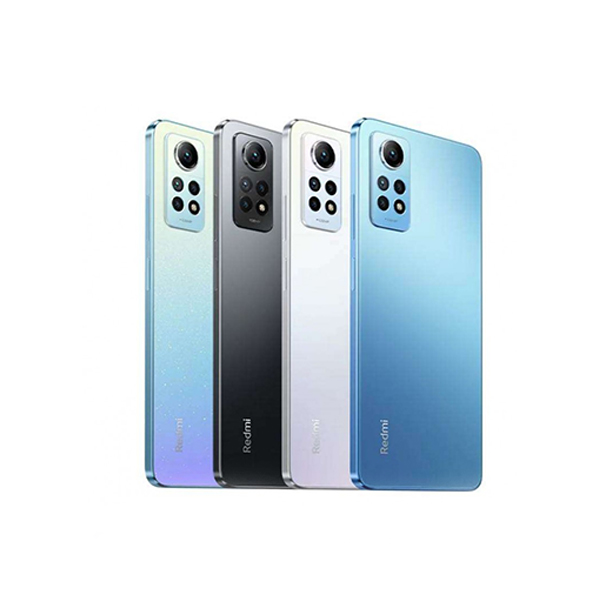
Conclusion
The Xiaomi Redmi Note 12 Pro is an excellent mid-range smartphone that delivers a well-rounded experience. Its 120Hz AMOLED display, solid performance, reliable 50 MP main camera with OIS, and fast 67W charging make it a compelling choice for users who want a premium experience without paying flagship prices.
While there are some minor drawbacks, such as the average ultrawide and macro cameras, MIUI bloatware, and the lack of wireless charging, these are outweighed by the phone’s strong points. If you’re looking for a device that offers great value for money, the Redmi Note 12 Pro is a strong contender in the mid-range segment.
Review
Disclaimer Note
All prices in Pakistan is updated daily from the price list provided by local shops and dealers but we can not guarantee that the information / price on this page is 100% correct (Human error is possible), always visit your local shop for exact cell phone cost & rate.

